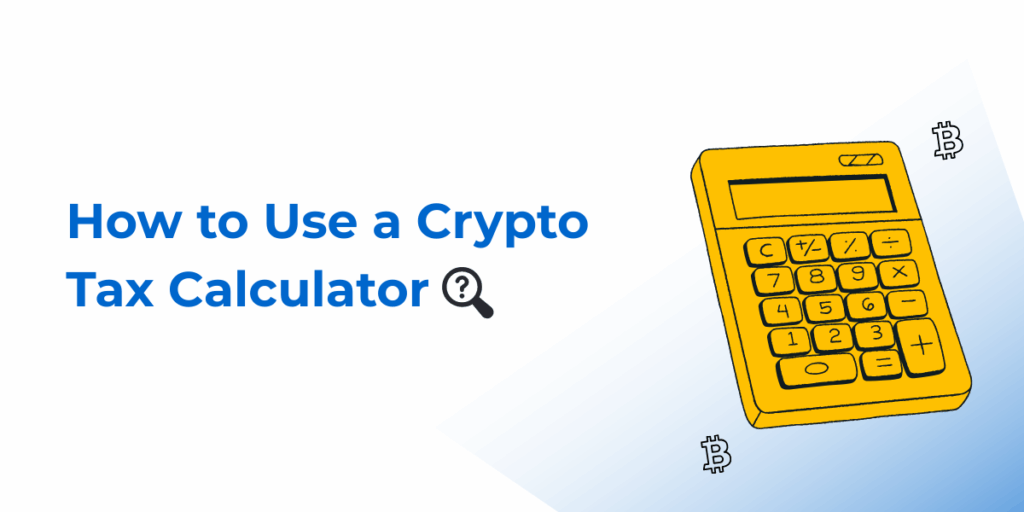
Tracking every trade, calculating gains, and keeping up with ever-changing tax regulations can be a daunting task. A single mistake may result in penalties, and manually sorting through countless transactions is time-consuming and exhausting. This is where a crypto tax calculator simplifies the process, eliminating uncertainty and ensuring accurate tax filing. But how do you use one effectively?
Not all tax calculators function the same way. Some integrate directly with exchanges, while others require manual data uploads. Understanding how to use the right tool can save you valuable time and enhance accuracy. This guide will walk you through the step-by-step process of using a crypto tax calculator, helping you file your taxes with confidence and ease.
What Is A Crypto Tax Calculator?
A crypto tax calculator is a digital tool that helps you determine the taxes owed on your cryptocurrency transactions. By inputting details such as purchase and sale prices, transaction dates, and any associated fees, these calculators compute your capital gains or losses. This information is crucial for accurately reporting your crypto activities to tax authorities and ensuring compliance with tax regulations.
How to Use a Crypto Tax Calculator to File Your Taxes?
Managing crypto taxes can feel overwhelming, but a crypto tax calculator simplifies the process. Following a few steps, you can ensure your taxes are accurate and compliant. Let’s break it down into simple steps.
Step 1: Create an Account on a Crypto Tax Calculator
Before you start, you need to sign up for a reliable crypto tax calculator. Several platforms offer tax calculation services, such as KoinX, CoinTracker, and TokenTax. Choose a platform that supports the exchanges and wallets you use. After selecting a platform, create an account by entering your email and setting a password. Some services may require identity verification to ensure compliance with tax regulations.
Step 2: Integrate Your Wallets and Exchanges
Once your account is set up, the next step is to connect all your crypto wallets and exchange accounts. Most tax calculators allow you to integrate them via API keys or by uploading CSV files containing your transaction history. Ensure you include all platforms where you have traded, staked, or earned crypto to get an accurate tax report. Missing any source could lead to incorrect tax calculations.
Step 3: Import All Transaction Data
After linking your wallets and exchanges, the software will fetch your transaction history automatically. If your chosen platform doesn’t support auto-import, you may need to manually upload transaction files. The system will then compile all your crypto activities, including trades, deposits, withdrawals, and staking rewards, in one place.
Step 4: Analyze and Categorise Transactions
Crypto tax calculators automatically classify transactions into relevant categories, such as capital gains, income, or staking rewards. However, if your software does not offer automatic classification, you must analyze and label each transaction manually. Double-check the classifications to ensure accuracy, as incorrect categorisation can impact your final tax report.
Step 5: Generate Your Tax Report
Once all transactions are correctly categorised, the software will generate a tax report based on your country’s tax rules. This report will include capital gains, income from crypto activities, and any deductible losses. Analyze the report carefully to ensure all data is correct. Some platforms allow you to download reports in formats suitable for tax authorities, such as CSV or PDF.
Step 6: File Your Taxes
With your tax report ready, you can proceed with filing your taxes. Depending on your country’s regulations, you can either file directly through the crypto tax software or manually enter the details into your tax portal. Some platforms also offer integrations with tax filing services, making it easier to submit your returns without errors.
Why Use A Crypto Tax Calculator?
Here’s why integrating such a tool into your investment routine is beneficial:
Automated Record Keeping
Manually tracking every crypto transaction is both time-consuming and prone to errors. A crypto tax calculator automatically consolidates all your transactions across various exchanges and wallets.

By inputting read-only API keys or wallet addresses, the calculator fetches your activity, presenting it in an easily understandable format. This automation ensures that no transaction goes unnoticed, maintaining comprehensive records effortlessly.
Significant Time Savings
Calculating taxes manually requires gathering transaction data, determining accurate valuations, and applying appropriate tax rules—a process that can be overwhelming. With a crypto tax calculator, once you’ve input your data, it swiftly computes your tax liabilities. This efficiency allows you to focus on your investment strategies rather than getting bogged down by administrative tasks.
Cost-Effective Solution
Hiring a professional accountant for crypto tax reporting can be expensive, especially for those with extensive trading histories. Crypto tax calculators offer a more affordable alternative, with yearly subscriptions starting at reasonable rates. This investment not only provides peace of mind but also ensures compliance without breaking the bank.
Enhanced Accuracy and Error Reduction
The intricacies of crypto transactions can lead to miscalculations when done manually. Crypto tax calculators utilise advanced algorithms to determine tax obligations based on local regulations, transaction types, dates, and asset cost bases. By automating these calculations, the potential for human error diminishes, ensuring precise tax reporting and reducing the risk of penalties.
Up-to-Date Regulatory Compliance
Cryptocurrency regulations are continually evolving. Keeping abreast of these changes is crucial for accurate tax reporting. Reputable crypto tax calculators stay updated with the latest tax laws, ensuring that your reports align with current requirements. This proactive approach helps you remain compliant and avoid potential legal issues.
Comprehensive Transaction Categorisation
Understanding the nature of each transaction is vital for accurate tax reporting. Advanced crypto tax calculators categorise transactions meticulously, distinguishing between various activities such as trading, staking, mining, and more. This detailed categorisation ensures that each transaction is taxed appropriately, reflecting your true tax liability.
Real-Time Portfolio Tracking
Beyond tax calculations, many crypto tax calculators offer real-time syncing of your transactions and balances.

This feature provides an up-to-date overview of your portfolio, allowing you to make informed investment decisions. Staying informed about your holdings enables proactive tax planning and strategy adjustments as needed.
Conclusion
A crypto tax calculator can do all the heavy lifting, ensuring accuracy while saving you hours of manual work in calculating crypto taxes. But using it the right way makes all the difference. If you don’t set it up correctly or miss key details, you could still have errors in your tax report. Whether you’re a casual investor or an active trader, this guide has explained everything you need to know, from linking your exchanges to generating a tax report that keeps you compliant.












